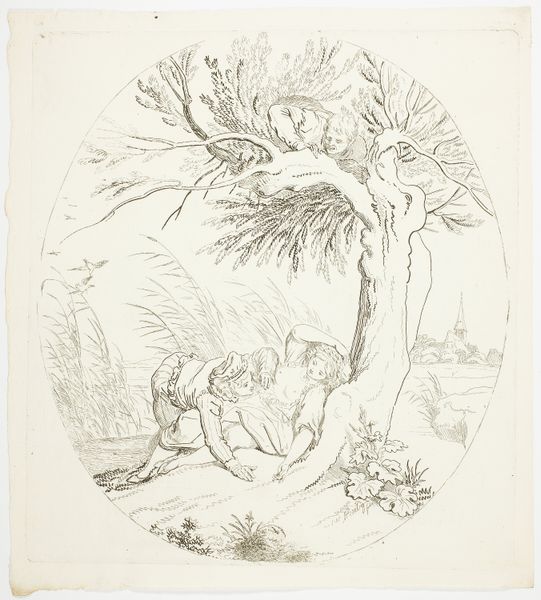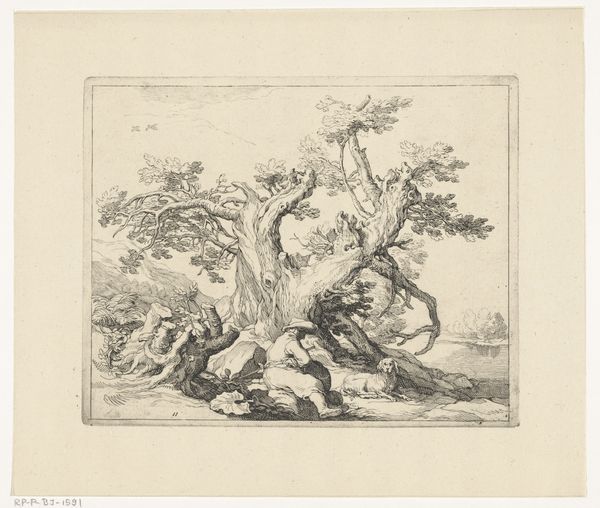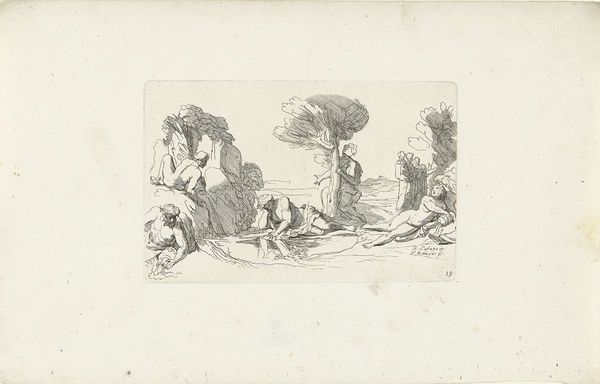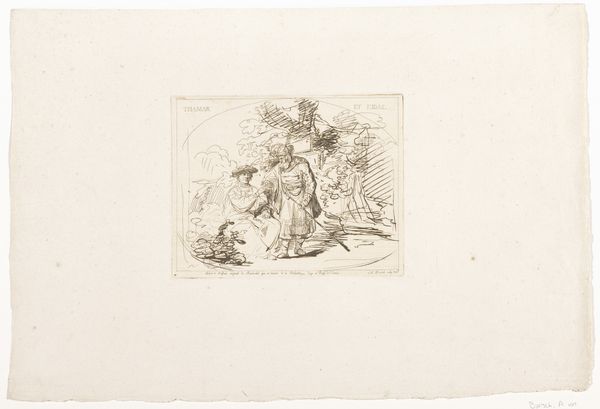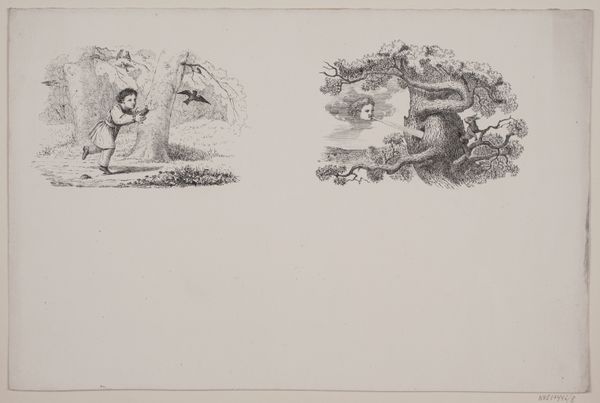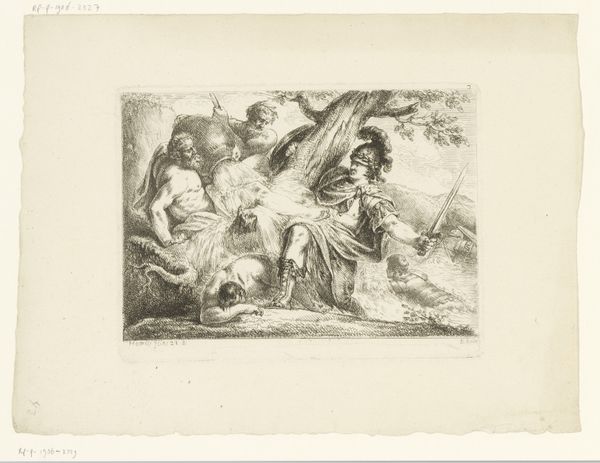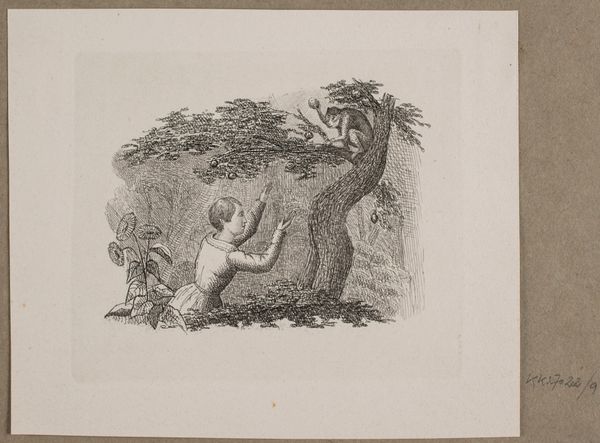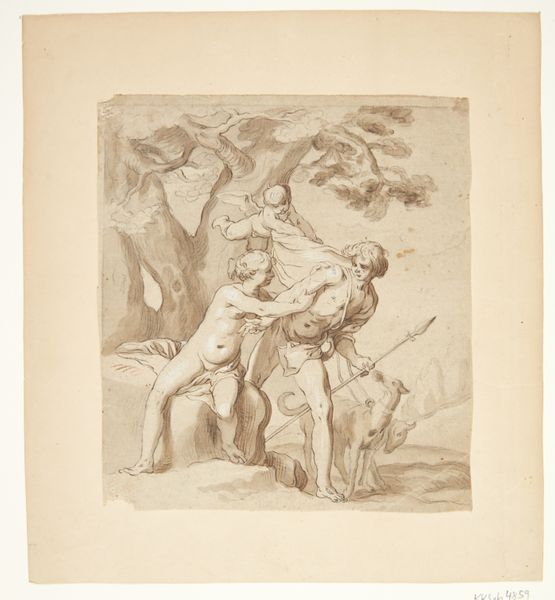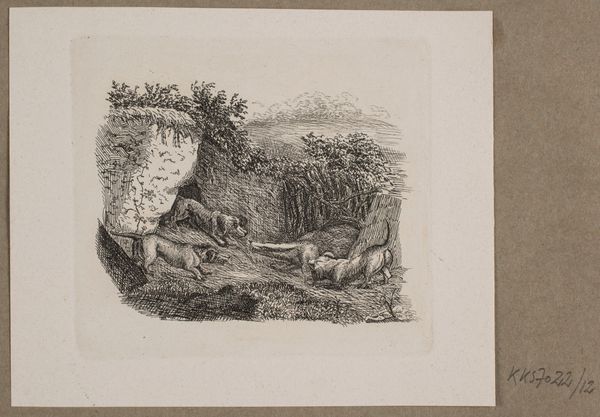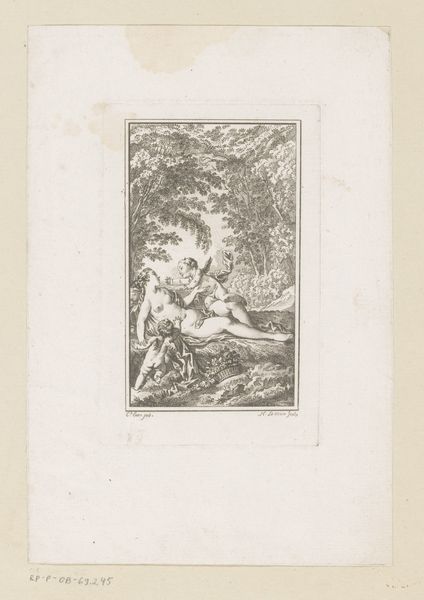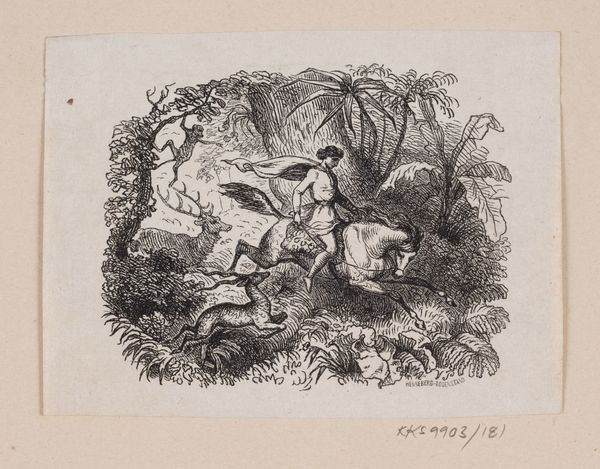
To illustrationer til W. Hey "Halvthundrede Fabler for Børn" 1848
0:00
0:00
drawing, lithograph, print, etching, paper, ink
#
drawing
#
narrative-art
#
lithograph
# print
#
etching
#
paper
#
ink
#
genre-painting
Dimensions: 180 mm (height) x 275 mm (width) (bladmaal)
Curator: This is "To illustrationer til W. Hey 'Halvthundrede Fabler for Børn'," two illustrations for W. Hey's "Fifty Fables for Children," created around 1848. Editor: Well, looking at this lithograph, the starkness of the black ink on the paper gives the scene a quaint and almost urgent narrative quality, doesn't it? It evokes a kind of direct morality play from a bygone era. Curator: It certainly does. We can see that urgency reflected in the relationship between humanity and nature depicted here. Note the contrast of a child reaching up for a squirrel on the left versus a hunting dog eager for the cat nestled in the tree on the right. Editor: Yes, there's this feeling of opposing forces or inevitable conflicts. In the composition on the right, a fallen hat lying on the forest floor hints at the prior presence of the cat's owner, whose inability to call off their hunting dog seems indicative of humans' disruptive relationship with animals. But it begs the question: What purpose did animal symbols hold? Curator: I would venture to suggest that the image encapsulates not only that disruption, but, in alignment with the "fables" nature of this work, also points towards a child's journey of social development, which in this case involves coming to understand humans' troubled connection with non-human actors. Editor: These illustrations seem to have been meant as cautionary symbols for the viewers, likely middle-class German families seeking to educate children about class, natural order, and morality. These "morality plays" appear like little archetypes in visual form, reminding people of universal truths. But can children truly grapple with symbols and morals beyond their scope of understanding? Curator: Perhaps, but the use of simple characters is a reflection of broader cultural anxieties related to human connection with nature during the period of rising industrialization. Editor: Looking closely at the left image, though, is the interaction so dire? The child appears gentle in the reaching up to the squirrel, with little inclination for disrupting nature. In this regard, could it speak towards our responsibility to maintain the natural order? Curator: Possibly! I suppose there's a duality presented: humanity's potential to preserve as well as destroy. I hadn't considered that balance to such a strong degree, but in seeing these images as opposing moral choices, it becomes very clear. Editor: Well, I think this has enriched our appreciation of these images, revealing something essential about the nature of human interactions. Curator: Absolutely, examining art this way deepens our understanding of past generations’ values and attitudes. Thank you.
Comments
No comments
Be the first to comment and join the conversation on the ultimate creative platform.
